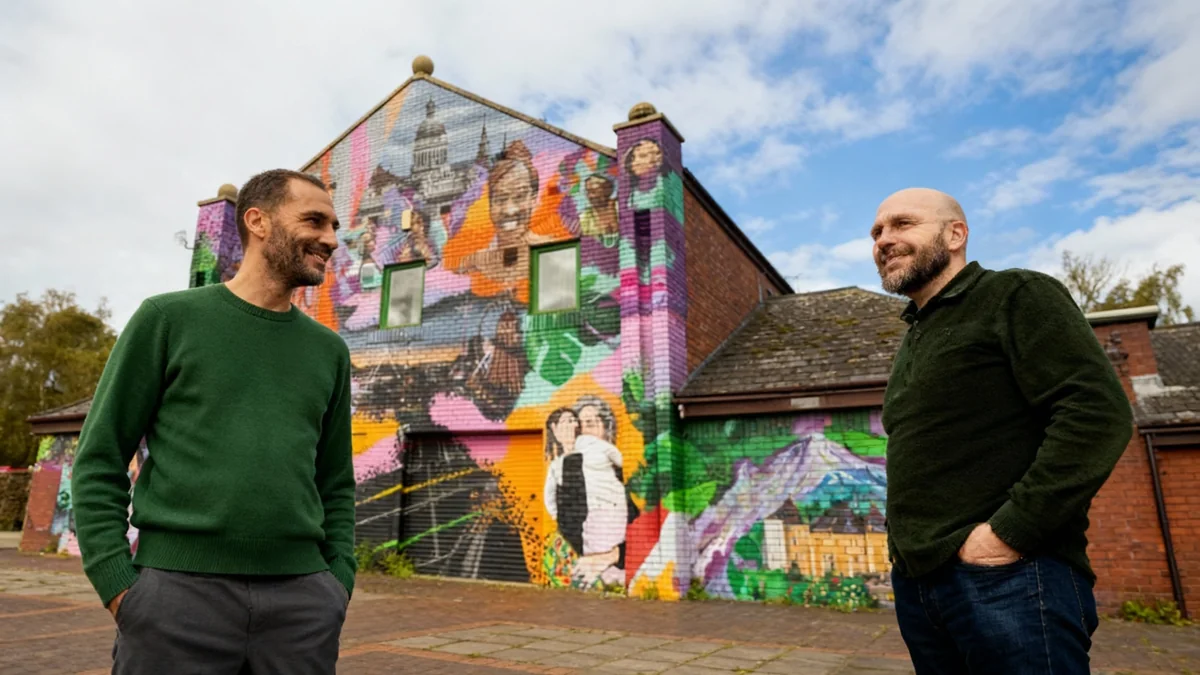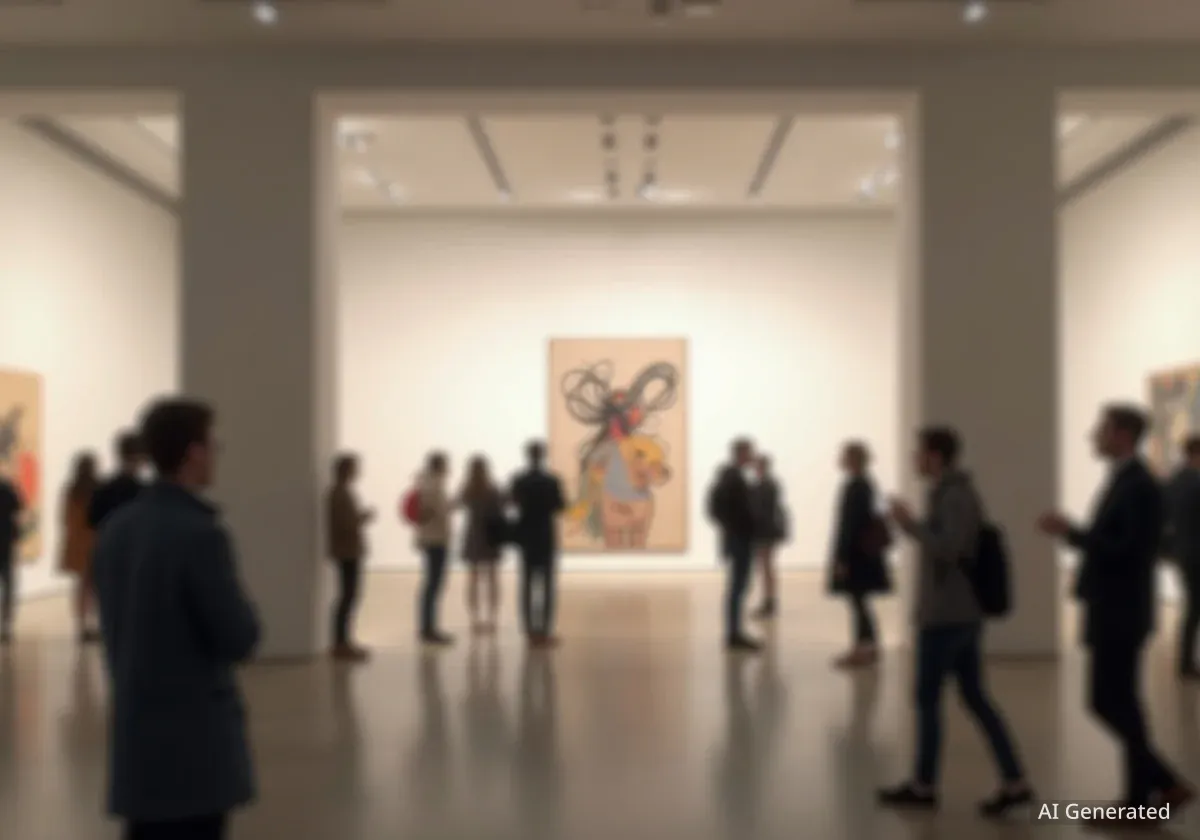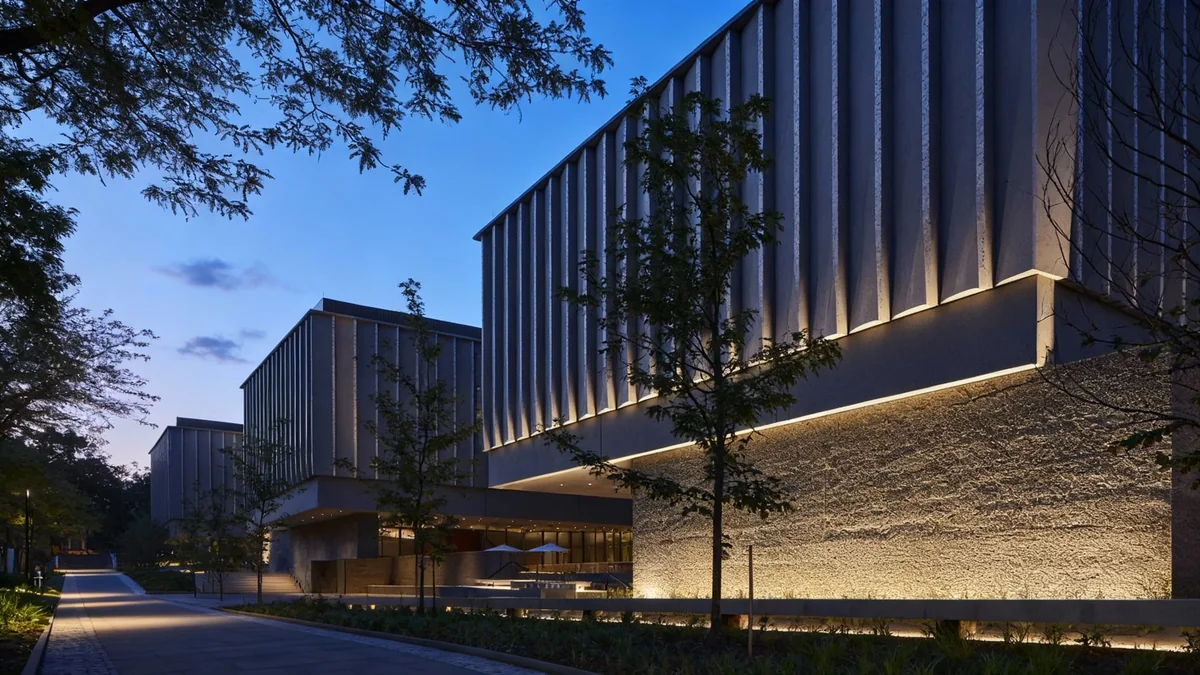In a groundbreaking move for the cultural sector, the New Art Exchange (NAE) in Nottingham has become what is believed to be the first arts institution in the world to permanently integrate a citizens' assembly into its leadership structure. A group of 40 local residents from the diverse Hyson Green community now holds significant power, making key decisions on everything from programming to budget allocation.
This innovative model of co-leadership has already yielded tangible results, leading to a 22% increase in overall engagement and a 48% rise in visitors from global ethnic majority backgrounds. The gallery, which is the largest in the UK dedicated to African, Caribbean, and South Asian artists, is pioneering a new way for cultural spaces to connect with and serve their communities.
Key Takeaways
- The New Art Exchange in Nottingham is co-led by a 40-member citizens' assembly from the local Hyson Green area.
- This assembly has decision-making power over programming, artist selection, and has allocated £285,000 in funding.
- Key changes implemented by the assembly include redesigning the gallery's entrance and introducing new social events.
- The initiative has resulted in a 22% increase in public engagement and a 48% growth in visitors from diverse ethnic backgrounds.
A Radical Shift in Power
The decision to empower local residents marks a significant departure from traditional top-down management in the arts. The 40 members of the assembly, who represent a community where 52 different languages are spoken, are not merely consultants; they are integral to the gallery's governance.
Saad Eddine Said, the chief executive and artistic director at NAE, explained the philosophy behind the change. "Without citizens and community around the table shaping the direction and showing the horizon, we would quickly become an average organisation," he said. "This neighbourhood is such a huge treasure of culture and of talent so we wanted it to play a key role, not just in terms of consultancy, but in real terms of coleadership."
For many participants, the experience has been transformative. "I used to see this place on the street but I didn’t know what was here, I didn’t even know it was an art gallery," shared Felix, a 20-year-old nursing student and assembly member. "And now I’m here shaping its future."
From Skepticism to Tangible Change
The assembly's influence is not theoretical. They have directed concrete changes based on their lived experiences in the Hyson Green neighborhood, an area that has faced challenges with high deprivation rates and negative public perception.
One of the first decisions was to remove a street gallery installed outside the building. While intended to be inviting, assembly members reported that it was perceived as intimidating and off-putting to locals. The gallery's leadership acted on this feedback immediately.
"Removing the street gallery felt counterintuitive to us. But straight away that street gallery was in the bin, and in the bin for ever. It didn’t matter whether we understood it. There is no compromise in that conversation."
Instead of the outdoor installation, funds were redirected to enhance the gallery’s café, turning it into a more welcoming and accessible space designed to draw people inside. The assembly also identified a lack of social venues in the area, prompting NAE to launch Friday evening events like poetry nights and DJ sets, which have become very popular.
Overcoming Community Cynicism
Many residents were initially doubtful, having seen previous community initiatives fail to deliver. Hyson Green has often been the subject of negative attention for issues like crime and fly-tipping, leading to a sense of disempowerment among its residents.
A National Trend?
While NAE's model of permanent co-leadership is unique, other major UK cultural institutions are exploring similar democratic approaches. The National Gallery recently announced a new citizens' assembly to make recommendations, and the Birmingham Museum & Art Gallery used a citizens' jury to inform its strategy, including extending opening hours.
Kathy, a retired resident, admitted her initial cynicism. "I’ve lived out here a long time, and I was sceptical... because I’ve seen so many initiatives come and go," she said. "This area has been ignored and if people experience the negative for too long, it can disempower them. So for me, it has been a real boost. I feel invigorated by being part of this process."
A New Definition of Success
The shift in leadership has redefined power dynamics within the institution. Adam Roe, the gallery's executive director, addressed the question of whether he felt he had lost authority.
"Actually, I think I’ve gained power," Roe stated. "Collectively, we’ve got so much more knowledge because we’re doing the things we know we need to do. And some of the artists and the performers we work with now we probably would never have known about before."
Impact by the Numbers
- £285,000: Funding allocated by the citizens' assembly since its inception.
- 52: Languages spoken in the Hyson Green community represented by the assembly.
- 48%: Increase in visitors from global ethnic majority backgrounds.
- 22%: Overall growth in public engagement at the gallery.
While Said acknowledges that setting up the assembly was "hugely expensive and time consuming," he firmly believes it has been essential to the gallery's survival and relevance, especially during a challenging period for the arts sector.
He has since developed a blueprint to help other organizations adopt a similar model. "It has helped us navigate one of the most challenging times for the cultural and art industry in a very long time," Said concluded. "Our citizens make us relevant."




